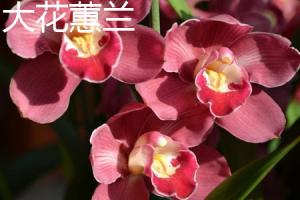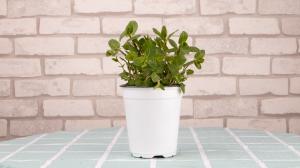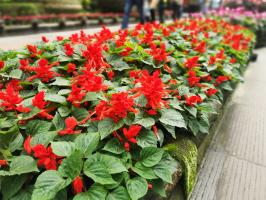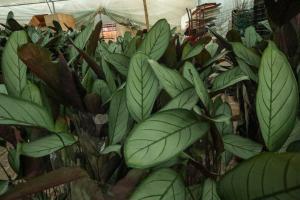Introduction
Tomato plants are commonly grown as annuals, meaning they complete their life cycle within a year. However, with proper care and maintenance, some tomato plant varieties may actually be grown as perennials. In this article, we will discuss what tomato plants look like if they are perennials.
Tomato Plant Structure
Tomato plants, whether grown as annuals or perennials, have the same basic structure. They have a main stem, which supports leaves and develops flowers and fruits. The stem is usually covered in small hairs that help protect it from pests and diseases. At the base of the stem are the roots, which absorb nutrients and water from the soil.
Perennial Tomato Plant Traits
Perennial tomato plants have a few distinctive traits that set them apart from their annual counterparts. First, they tend to have a larger root system. This is because their roots need to be stronger and longer-lasting than annual tomato plants in order to support the plant over multiple growing seasons. With a larger root system, perennial tomato plants are better able to withstand drought, disease, and other environmental stresses.
Another trait of perennial tomato plants is that they tend to have thicker and more fibrous stems. This is also a result of the plant needing to be stronger and more durable over time. The thicker stems also help to support the weight of the plant, which can grow quite substantial over years of continuous growth.
Lastly, perennial tomato plants often have a more bushy growth habit. This is because they are allowed to grow for longer periods of time, and will often produce more branches and foliage as a result. The increased number of branches and foliage can lead to a higher yield of fruits as well, making perennial tomato plants a great option for gardeners looking for a long-term investment.
Types of Perennial Tomato Plants
There are a few different types of tomato plants that may be grown as perennials. One example is the "Indeterminate" variety, which is known for its long growing season and ability to produce fruit continuously. Another option is the "Heirloom" variety, which is a traditional type of tomato plant that has been grown and saved for generations. These plants are highly valued for their unique flavors and usually have a very distinct appearance.
In addition to these types, there are also many hybrid varieties that have been developed specifically to be grown as perennials. These plants may be bred for increased disease resistance, drought tolerance, or other desirable traits that make them better suited for a long-term growing period.
Care and Maintenance of Perennial Tomato Plants
If you want to grow a tomato plant as a perennial, there are a few things you should keep in mind when it comes to care and maintenance. First, make sure to provide the plant with ample sunlight, preferably 8 hours of full sun per day. This will help the plant to produce more fruits and encourage a healthy growth pattern.
Next, be sure to give the plant enough water. While it is true that perennial tomato plants have a larger root system that is more resilient to drought, they still need regular watering to thrive. Aim to water deeply once a week, rather than shallowly every day, to encourage the roots to grow longer and deeper into the soil.
Lastly, prune the plant regularly to promote better fruit production and prevent disease. Remove any dead or diseased leaves or branches, and pinch back the growing tips of the plant once it has reached the desired height. This will encourage the plant to focus its energy on producing fruits rather than growing taller.
Conclusion
Perennial tomato plants are a great option for gardeners who want a long-term investment in their vegetable garden. With a larger root system, thicker stems, and bushy growth habit, these plants are able to withstand a range of environmental stresses and produce a bountiful harvest year after year. With proper care and maintenance, these plants can even outlast their human caretakers, becoming a beloved part of the garden for generations to come.

 how many times do yo...
how many times do yo... how many planted tre...
how many planted tre... how many pine trees ...
how many pine trees ... how many pecan trees...
how many pecan trees... how many plants comp...
how many plants comp... how many plants can ...
how many plants can ... how many plants and ...
how many plants and ... how many pepper plan...
how many pepper plan...
































